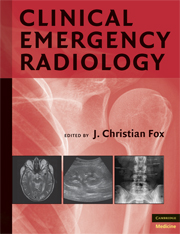Book contents
- Frontmatter
- Contents
- Contributors
- PART I PLAIN RADIOGRAPHY
- 1 Plain Radiography of the Upper Extremity in Adults
- 2 Lower Extremity Plain Radiography
- 3 Chest Radiograph
- 4 Plain Film Evaluation of the Abdomen
- 5 Plain Radiography of the Cervical Spine
- 6 Thoracolumbar Spine and Pelvis Plain Radiography
- 7 Plain Radiography of the Pediatric Extremity
- 8 Plain Radiographs of the Pediatric Chest
- 9 Plain Film Radiographs of the Pediatric Abdomen
- 10 Plain Radiography in Child Abuse
- 11 Plain Radiography in the Elderly
- PART II ULTRASOUND
- PART III COMPUTED TOMOGRAPHY
- PART IV MAGNETIC RESONANCE IMAGING
- Index
- Plate Section
9 - Plain Film Radiographs of the Pediatric Abdomen
from PART I - PLAIN RADIOGRAPHY
Published online by Cambridge University Press: 07 December 2009
- Frontmatter
- Contents
- Contributors
- PART I PLAIN RADIOGRAPHY
- 1 Plain Radiography of the Upper Extremity in Adults
- 2 Lower Extremity Plain Radiography
- 3 Chest Radiograph
- 4 Plain Film Evaluation of the Abdomen
- 5 Plain Radiography of the Cervical Spine
- 6 Thoracolumbar Spine and Pelvis Plain Radiography
- 7 Plain Radiography of the Pediatric Extremity
- 8 Plain Radiographs of the Pediatric Chest
- 9 Plain Film Radiographs of the Pediatric Abdomen
- 10 Plain Radiography in Child Abuse
- 11 Plain Radiography in the Elderly
- PART II ULTRASOUND
- PART III COMPUTED TOMOGRAPHY
- PART IV MAGNETIC RESONANCE IMAGING
- Index
- Plate Section
Summary
INDICATIONS
Plain film radiographs of the pediatric abdomen ordered from the ED are indicated in stable patients to provide contributory information in the diagnostic process of abdominal health complaints. The radiographic findings on plain film abdominal radiographs are often nonspecific and/or subtle.
DIAGNOSTIC CAPABILITIES
Plain film radiographs contrast differences in the standard five radiographic densities (metallic, calcific/bone, soft tissue/water, fat, and air) to assist in the diagnostic process. In an “abdominal series,” two basic views are generally obtained: flat (supine) and upright (erect). Other views include a prone view and an anteroposterior (AP) view of the chest. Occasionally, a single view is obtained to look for metallic foreign bodies, calcific urolithiasis, or other specific indications. The term “KUB” (kidney-ureter-bladder) is often used to order abdominal radiographs, but it should be avoided because it is ambiguous as to whether one view or multiple views are desired. The standard upright view is useful to see the abdomen in general. It should be noted that gravity will make the liver and the spleen appear larger on this view than on the flat (supine) view. Air-fluid levels can only be viewed on the upright view because the air-fluid interface will be parallel with the x-ray beam.
Keywords
- Type
- Chapter
- Information
- Clinical Emergency Radiology , pp. 153 - 175Publisher: Cambridge University PressPrint publication year: 2008

